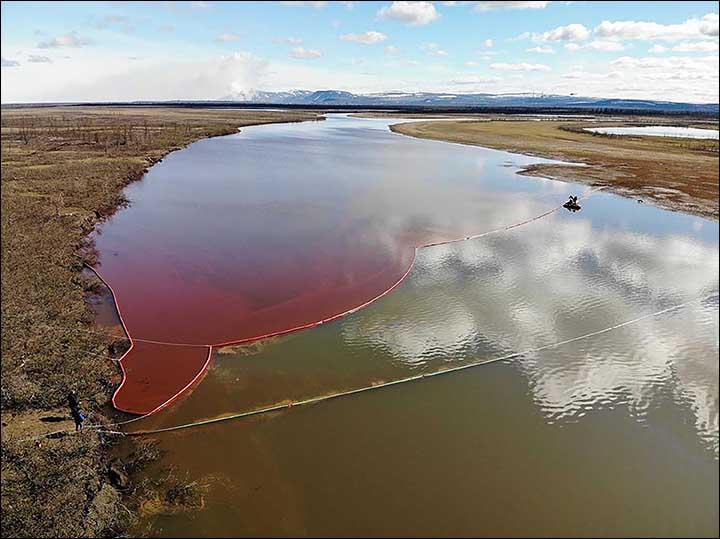20000 tons fuel leak near Norilsk mines in arctic Russia
Sentinel-2 MSI acquired on 14 May 2020 at 06:16:29 UTC
Sentinel-2 MSI acquired on 18 May 2020 at 05:56:39 UTC
Sentinel-2 MSI acquired on 21 May 2020 at 06:06:29 UTC
Sentinel-2 MSI acquired on 31 May 2020 at 06:06:39 UTC
Sentinel-2 MSI acquired on 18 May 2020 at 05:56:39 UTC
Sentinel-2 MSI acquired on 21 May 2020 at 06:06:29 UTC
Sentinel-2 MSI acquired on 31 May 2020 at 06:06:39 UTC
Keyword(s): Polar, cryosphere, environment, pollution, oil spill, water colour, quater quality, river, hydrology, mine, Russia
For 18 years, possibly longer, areas downstream of the fuel tank (leading to the Kayerkan district of Norilsk at north-east and to its coal mine at north-west) show in red, contrasting with the surrounding landscape.
Norilsk was founded at the end of the 1920s, it is the world's northernmost city with more than 100 000 inhabitants. With temporary inhabitants included, its population reaches 220 000. The nickel deposits of Norilsk-Talnakh are the largest-known nickel-copper-palladium deposits in the world. The smelting of the nickel ore is directly responsible for severe pollution, which generally comes in the form of acid rain and smog. By some estimates, one percent of global sulfur dioxide emission comes from Norilsk's nickel mines.

15 000 tons of fuel have been released into Ambarnaya river and 6 000 tons into the soil. It will take decades for the river to recover - Source: Siberian Times.







